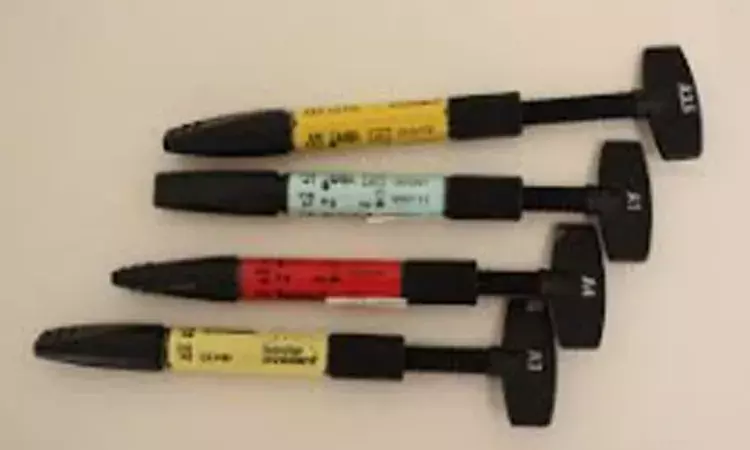- Home
- Medical news & Guidelines
- Anesthesiology
- Cardiology and CTVS
- Critical Care
- Dentistry
- Dermatology
- Diabetes and Endocrinology
- ENT
- Gastroenterology
- Medicine
- Nephrology
- Neurology
- Obstretics-Gynaecology
- Oncology
- Ophthalmology
- Orthopaedics
- Pediatrics-Neonatology
- Psychiatry
- Pulmonology
- Radiology
- Surgery
- Urology
- Laboratory Medicine
- Diet
- Nursing
- Paramedical
- Physiotherapy
- Health news
- Fact Check
- Bone Health Fact Check
- Brain Health Fact Check
- Cancer Related Fact Check
- Child Care Fact Check
- Dental and oral health fact check
- Diabetes and metabolic health fact check
- Diet and Nutrition Fact Check
- Eye and ENT Care Fact Check
- Fitness fact check
- Gut health fact check
- Heart health fact check
- Kidney health fact check
- Medical education fact check
- Men's health fact check
- Respiratory fact check
- Skin and hair care fact check
- Vaccine and Immunization fact check
- Women's health fact check
- AYUSH
- State News
- Andaman and Nicobar Islands
- Andhra Pradesh
- Arunachal Pradesh
- Assam
- Bihar
- Chandigarh
- Chattisgarh
- Dadra and Nagar Haveli
- Daman and Diu
- Delhi
- Goa
- Gujarat
- Haryana
- Himachal Pradesh
- Jammu & Kashmir
- Jharkhand
- Karnataka
- Kerala
- Ladakh
- Lakshadweep
- Madhya Pradesh
- Maharashtra
- Manipur
- Meghalaya
- Mizoram
- Nagaland
- Odisha
- Puducherry
- Punjab
- Rajasthan
- Sikkim
- Tamil Nadu
- Telangana
- Tripura
- Uttar Pradesh
- Uttrakhand
- West Bengal
- Medical Education
- Industry
Hydrophobic bonding resin shows good micro-shear bond strength results, Study reveals

According to recent research, it has been observed that only hydrophobic bonding resin (HBR) can obtain good micro-shear bond strength (MSBS) results, while atmospheric pressure plasma (PLA) alone was not beneficial, as published in the Journal of Esthetic and Restorative Dentistry.
Literature suggest very few studied where the effect of argon plasma on repair bond strength using nanofilled and microhybrid composites is evaluated.
Hence, William Matthew Negreiros and colleagues from the Dental Materials Division, Department of Restorative Dentistry, Piracicaba Dental School, University of Campinas, Piracicaba, São Paulo, Brazil conducted this present study with the sole aim to evaluate the effect of atmospheric pressure plasma (PLA), sandblasting (SAN), silanization (SIL) and hydrophobic bonding resin (HBR) on the micro‐shear bond strength (MSBS) of fresh nanofilled (NF) or microhybrid (MH) composites to water‐aged nanofilled composite.
The authors fabricated NF plates and stored them in distilled water for 4 months. The aged plates were assigned to the different groups (n = 6): 1‐ untreated; 2‐ SAN + SIL + HBR; 3‐ HBR; 4‐ PLA + HBR; 5‐ SAN + HBR; 6‐ SAN + PLA + HBR; and 7‐ PLA.
Two fresh composite cylinders were constructed on each plate with NF or MH composites and tested after 24 h or 1 year of water‐storage, using the MSBS testing. Data were analyzed by three‐way ANOVA and Tukey test (α = 0.05).
The following key findings were highlighted-
- NF yielded better outcomes than MH at 24 h, which was not observed at 1 year.
- HBR showed the highest MSBS results, while untreated and PLA groups yielded the lowest one.
- MSBS reduced for all groups after 1 year.
Therefore, it was concluded that "Only HBR can obtain good MSBS results, while PLA alone was not beneficial. After 1 year, a reduction in repair MSBS was observed and the type of composite did not influence the results."
Furthermore, the repair technique can be simplified with the use of only an adhesive and macromechanical retentions in the old composite, regardless the type of fresh composite, the authors inferred.
Dr. Nandita Mohan is a practicing pediatric dentist with more than 5 years of clinical work experience. Along with this, she is equally interested in keeping herself up to date about the latest developments in the field of medicine and dentistry which is the driving force for her to be in association with Medical Dialogues. She also has her name attached with many publications; both national and international. She has pursued her BDS from Rajiv Gandhi University of Health Sciences, Bangalore and later went to enter her dream specialty (MDS) in the Department of Pedodontics and Preventive Dentistry from Pt. B.D. Sharma University of Health Sciences. Through all the years of experience, her core interest in learning something new has never stopped. She can be contacted at editorial@medicaldialogues.in. Contact no. 011-43720751
Dr Kamal Kant Kohli-MBBS, DTCD- a chest specialist with more than 30 years of practice and a flair for writing clinical articles, Dr Kamal Kant Kohli joined Medical Dialogues as a Chief Editor of Medical News. Besides writing articles, as an editor, he proofreads and verifies all the medical content published on Medical Dialogues including those coming from journals, studies,medical conferences,guidelines etc. Email: drkohli@medicaldialogues.in. Contact no. 011-43720751


